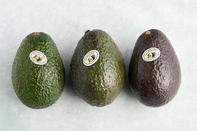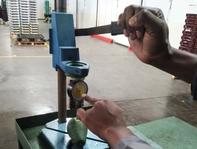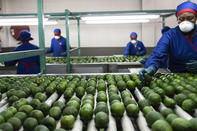It is important to know that avocados do not ripen while on the tree, but must be picked in order to facilitate ripening.

When to Pick Avocados?
Fruit needs to be picked when mature as the fruit will only ripen after picking. If picked while still immature, the fruit will not ripen but rather shrivel.
For the best eating quality, avocados must have an oil content of at least 10 per cent. Maturity tests are done before harvesting commences. Moisture analysis are done using specialised equipment called moisture meters or by drying out samples in an oven or a microwave oven.

The Avocado Harvest
Depending on the production area as well as the cultivar - early or late-season varieties - harvesting of avocados in South Africa can start in February with Fuerte and ends in October/November with Lamb Hass and Ryan. New varieties are being developed and planted to extend the avocado harvest.
Avocados are hand-picked and taken to the packing shed where they are inspected for bruising and blemishes. They are size graded and washed with an antifungal food grade wash. Avocados can be packed into cartons, trays, netted bags or plastic bags, depending on the market.
Throughout the harvesting, sorting and packing process care is taken not to cause fingernail damage and bruising of the fruit; workers wear gloves in order to protect the fruit from damage.
Storage and Ripening of Avocados

South African avocados are exported via sea freight from Cape Town to Europe. The sea voyage takes between 14 to 18 days and up to 25 days to reach the shop in Europe and in order to slow down the ripening process, avocados are kept cool and transported in refrigerated containers under controlled atmosphere (CA).
The cooler the storage and transport temperature, the slower the ripening process, but care should be taken to avoid chilling injury. Early season avocados such as Fuerte are especially prone to this. Chilling injury can occur at storage temperatures of below 5°C and cause internal discolouration of the flesh to grey or brown with black spots forming on the skin.
The South African Avocado Growers’ Association (SAAGA) recommends a temperature of 6 - 7°C and relative humidity of 85 - 95%. A temperature of 7.5°C for early season fruit is optimal. To trigger fruit-softening, avocados are kept for one or two days at 20 - 25°C at 95% relative humidity.
Avocados should not be stored for lengthy periods with ethylene-producing produce such as bananas, apples or cabbages as ethylene gas can cause internal discolouration. However, to facilitate faster ripening at home, avocados may be placed with bananas in a brown paper bag for a few days.
By Marinda Louw